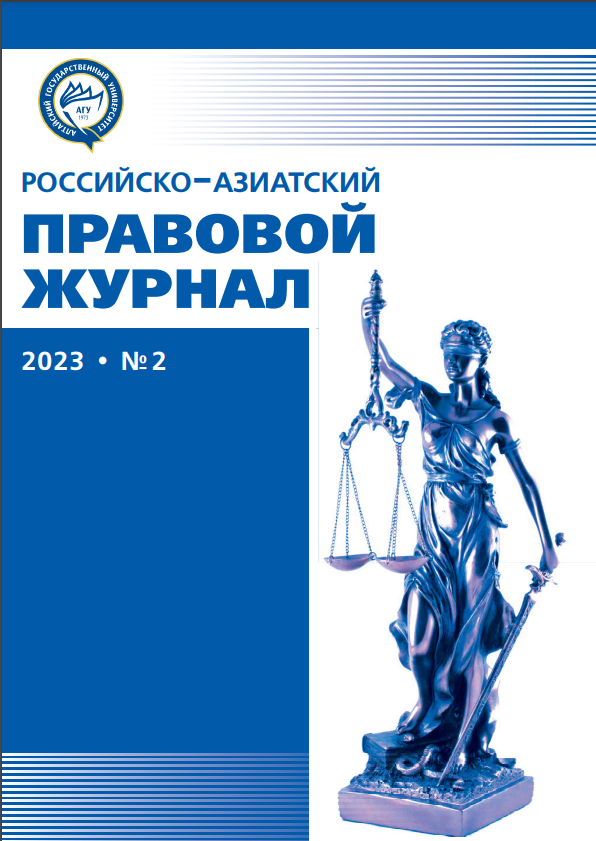HOW INTERNATIONAL STANDARDS OF WOMEN'S RIGHTS WERE BORN: THE EXPERIENCE OF ANALYZING THE LEGAL POLICY OF THE UNITED NATIONS IN THE 1950–1970S.
УДК 341.1 ББК 67
Abstract
The purpose of the article is to show the history of the formation of the legal foundations of genderequality in the rule-making activities of the United Nations in the period of 1950–1970s. The chronologicalframework was not chosen by chance, it was for the 50–70s. 20th century there was an active phase of the adoption of legal contractual documents in the field of the institution of the rights of women and men. Theauthors analyze the consistent history of the UN legal policy in this area.The article establishes that a decisive struggle against gender asymmetry fell on the initial stage of theformation of an organization that aims at world peace. In general, the authors come to the conclusion thatfrom the second half of the XX century. in the world community, the process of developing internationallegal acts in the field of protecting women's rights has been developed. Progress in defining the essence andcontent of women's rights proceeded naturally and evolutionarily. International conventions and pacts inthis area were progressively adopted. Ultimately, women were equalized with men. Anti-discriminationinternational legislation was actively developed.
Downloads
References
Устав Организации Объединенных наций от 26 июня 1945 г. // Международные акты о правах человека : сборник документов / сост. В.А. Карташкин, Е.А. Лукашина. М., 1999. С. 2–34.
Агеева А.В. Международные правовые стандарты и проблемы защиты прав женщин // Современные научные исследования: теория, методология, практика. 2013. №3 (3). Т. 1. С. 7–9.
Международный пакт о гражданских и политических правах // Права человека. Сборник международных документов. М., 1986. С. 45–73.
Международный пакт об экономических, социальных и культурных правах // Права человека. Сборник международных документов. М., 1986.
Конвенция о гражданстве замужней женщины // Права человека. Сборник международных документов. М., 1986.
Конвенция о ликвидации всех форм дискриминации в отношении женщин // Права человека. Сборник международных документов. М., 1986. С. 126–144.
Конвенция о политических правах женщин // Права человека. Сборник международных документов. М., 1986. С. 122–126.
Russian-Asian Law Journal is a golden publisher, as we allow self-archiving, but most importantly we are fully transparent about your rights.
Authors may present and discuss their findings ahead of publication: at scientific conferences, on preprint servers, in public databases, and in blogs, wikis, tweets, and other informal communication channels.
Russian-Asian Law Journal allows authors to deposit manuscripts (currently under review or those for intended submission) in non-commercial, pre-print servers such as ArXiv.
Authors who publish with this journal agree to the following terms:
- Authors retain copyright and grant the journal right of first publication with the work simultaneously licensed under a Creative Commons Attribution License that allows others to share the work with an acknowledgement of the work's authorship and initial publication in this journal.
- Authors are able to enter into separate, additional contractual arrangements for the non-exclusive distribution of the journal's published version of the work (e.g., post it to an institutional repository or publish it in a book), with an acknowledgement of its initial publication in this journal.
- Authors are permitted and encouraged to post their work online (e.g., in institutional repositories or on their website) prior to and during the submission process, as it can lead to productive exchanges, as well as earlier and greater citation of published work (See The Effect of Open Access).








